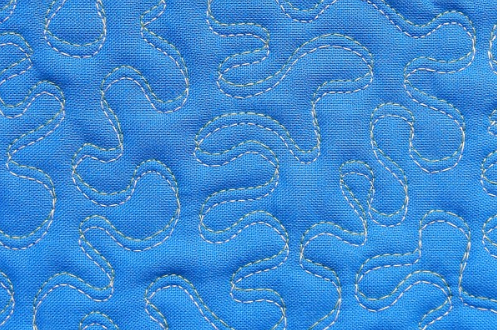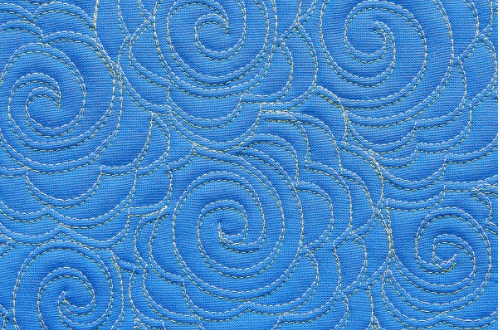Free Motion Quilting With A Double Needle Double The Fun

How About Trying Double Needle Quilting.
Quilting with a twin needle and a walking foot renders some of the nicest designs and it’s done on your home machine. It’s very creative and even a beginner quilter can do this following these tips.
If you’ve never tried quilting with a double needle, start with straight line stitching using a walking foot. A walking foot provides an even feed that helps pull the top layer of your quilt through the sewing machine evenly. When twin needle quilting, the walking foot gives the added benefit of reducing the amount of stress on the twin needle.

The Denim Jeans needle is a great start to play with, and you can reduce top thread tension if the stitching creates too deep of a channel between stitching lines. Layer a 10″ square for testing to get the first feel of it. Then have fun experimenting to see just how many designs you can come up with using your twin needles and walking foot.
For example, Matchstick quilting renders a very dense texture with parallel rows of quilting stitched very close together, and can be done in half the time using a double needle. Draw reference lines to keep your stitching lines in order. For free motion quilting use a narrow width twin needle such as the 2.5 to quilt Loop de Loops, a quick read can be found here. Use an darning foot, and place a quilt easy mat on the machine to create a smooth surface such as this plastic roll up sled. The roll up ‘snow carpet’ plastic sled costs pennies and works wonders.
I loved the planning tips provided by Diane Doran from We All Sew. Diane suggests thinking about the effect of the double quilting lines which will change when you change the direction of the quilting, and provided some examples of the lovely motifs you can render using this technique. Quilt using an even medium speed for a more attractive result and help to prevent thread breakage. With a little practice it’s gets easier and becomes much like the freedom of quilting with a single needle.
Create a beautiful rose fill, spiraling in and out, then making arches around the spiral. It goes very quickly with a double needle.

The stitching at the back of the quilt is not as appealing, as the machine creates a zig zag stitch with the bobbin thread. if making a wall hanging the stitching won’t be seen at all. However if you’re wanting a nicer appearance for the back, use these two solutions. You could use the double stitching only as a background motif. Stitch on just the front and batting of your quilt sandwich with your double needle work, then add a backing fabric and complete your quilting.
Alternatively, quilt a regular quilt sandwich, and fuse an additional layer of fabric to cover the back. However the stitching at the back would be acceptable on many quilts.
Diane covers thread selection, explaining the use of highly contrasting thread to make them more visual. Using thread to match the fabric color creates texture.





